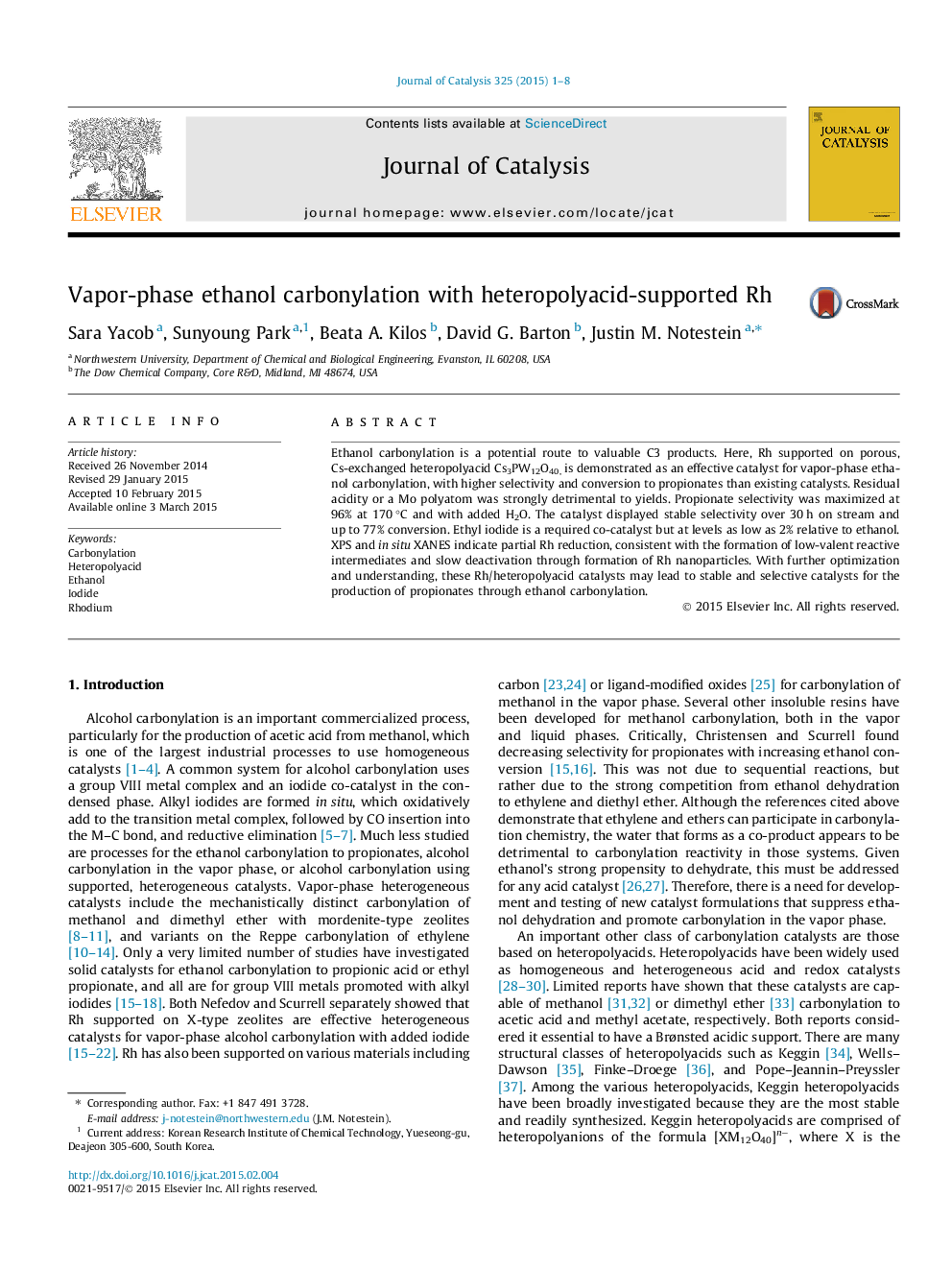| Article ID | Journal | Published Year | Pages | File Type |
|---|---|---|---|---|
| 60883 | Journal of Catalysis | 2015 | 8 Pages |
•The use of Rh/heteropolyacid for ethanol carbonylation is studied.•Fully exchanged heteropolyacids displayed highest selectivities toward propionates.•In situ spectroscopy suggests a drop in oxidation state under reaction conditions.•Broadly similar mechanism to soluble methanol carbonylation over Rh complexes.
Ethanol carbonylation is a potential route to valuable C3 products. Here, Rh supported on porous, Cs-exchanged heteropolyacid Cs3PW12O40, is demonstrated as an effective catalyst for vapor-phase ethanol carbonylation, with higher selectivity and conversion to propionates than existing catalysts. Residual acidity or a Mo polyatom was strongly detrimental to yields. Propionate selectivity was maximized at 96% at 170 °C and with added H2O. The catalyst displayed stable selectivity over 30 h on stream and up to 77% conversion. Ethyl iodide is a required co-catalyst but at levels as low as 2% relative to ethanol. XPS and in situ XANES indicate partial Rh reduction, consistent with the formation of low-valent reactive intermediates and slow deactivation through formation of Rh nanoparticles. With further optimization and understanding, these Rh/heteropolyacid catalysts may lead to stable and selective catalysts for the production of propionates through ethanol carbonylation.
Graphical abstractFigure optionsDownload full-size imageDownload high-quality image (89 K)Download as PowerPoint slide
